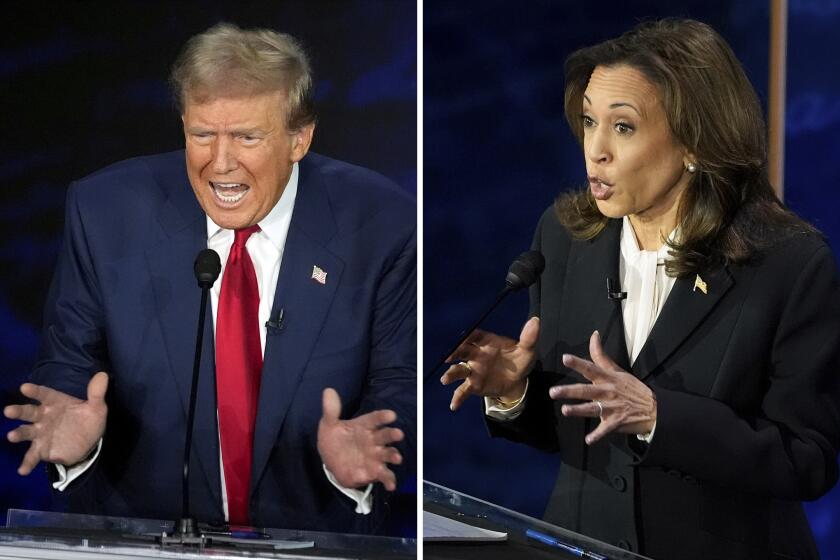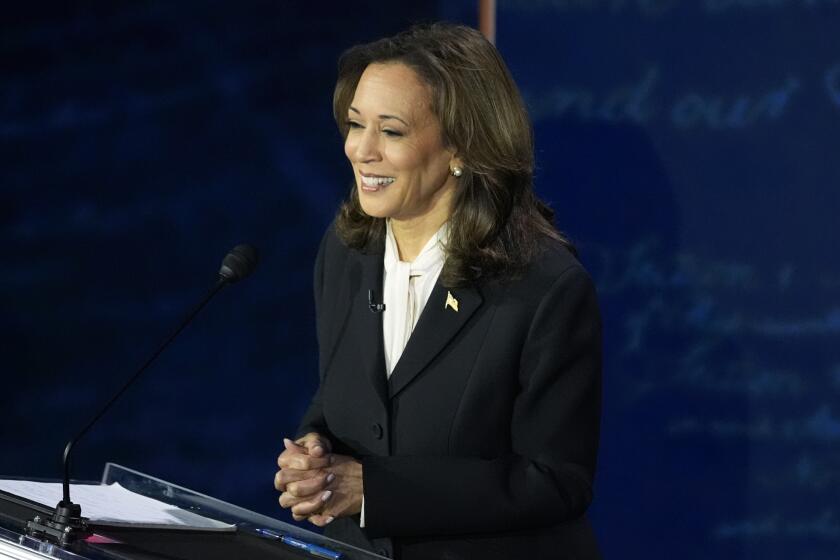Plan Would Kill Pension Tax Break : Treasury Wants to End Popular Pay Set-Aside Program
The Reagan Administration, modifying its tax overhaul plan to raise an additional $22.9 billion, Tuesday proposed to repeal a provision used by an estimated 20 million employees to reduce their taxes by setting aside part of their pay until after retirement.
The Treasury Department estimates that abolishing the popular salary reduction device, known as a 401(k) pension plan, would increase tax revenue by $11.6 billion over the next five years.
The new Administration plan is designed to meet congressional objections that President Reagan’s tax package would increase future budget deficits. The plan would also retain the current child care credit for working couples, raising about $200 million compared to the White House’s earlier proposal to convert the credit to a tax deduction, which would be more beneficial to upper-income taxpayers.
Higher Business Taxes
At the same time, business would be asked to pay $11.1 billion more in taxes over five years, as the Administration suggested that a proposed change in inventory accounting be dropped.
Prospects for tax reform are already in serious doubt on Capitol Hill, and Congress is expected to alter several important provisions of the Administration’s package, including the proposal to eliminate 401(k) salary reduction plans.
Employees in companies that take advantage of the 401(k) tax provision are permitted to defer taxes on up to $30,000 a year in pay, and most companies contribute additional money to their employees’ retirement accounts.
Last week, Treasury officials had said that changes in the Administration’s tax package were likely to focus on business tax preferences. The new proposals, disclosed in a letter from Treasury Secretary James A. Baker III to the leaders of the House and Senate tax-writing committees, were approved by the White House, an Administration spokesman said.
Revenue Neutrality Sought
The changes were offered to make the Administration plan as close to “revenue neutral” as possible, raising just as much in revenues as the current tax code.
Last month, after the congressional Joint Tax Committee estimated that the White House tax proposal would reduce revenues by about $25 billion from 1986 to 1990, Baker agreed to provide Congress with suggestions to close the relatively small revenue gap.
Baker, complaining that it is impossible to accurately estimate how tax revenues would be affected by a fundamental overhaul of the tax code, wrote Tuesday that the Administration’s three proposals were offered “only to comply with . . . an artificially exact definition of revenue neutrality.”
In offering the suggested changes, Baker insisted that Reagan would draw the line at any bill that includes tax rates higher than the 35% ceiling for individuals and 33% for corporations contained in the White House package announced last May.
“We cannot overstate the depth of the President’s commitment to the reduction of tax rates,” Baker wrote. “It is my view that under no circumstances would he accept tax rates above those proposed by him.”
‘Good-Faith Effort’
With Congress still in recess, reaction to the Administration proposal on Capitol Hill was muted. House Ways and Means Committee Chairman Dan Rostenkowski (D-Ill.) said: “The Treasury has made a good-faith effort to close the revenue gap. I accept their response as close enough to the mark.”
Senate Finance Committee Chairman Bob Packwood (R-Ore.) concurred, saying that the Administration had now reached the “point from which Congress should start in assessing the tax reform proposal.”
Packwood commended the Administration proposal to retain a child care credit, which Congress had been expected to do in any event. But he said he expected “significant opposition from employers and employees in Oregon and around the country” to the proposed repeal of 401(k) plans.
About 20 million employees are covered by 401(k) plans, said Stuart J. Brahs, executive director of the Assn. of Private Pension and Welfare Plans, and the retirement provision has become increasingly popular since the Internal Revenue Service set down preliminary rules for the plans in 1982.
‘A Half-Baked Way’
Brahs complained that the latest 401(k) proposal--the same as one first suggested by the Treasury Department last November--shows “that the Administration doesn’t know where it stands on the issue. 401(k)s are being sacrificed for the sake of revenues, a half-baked way for making retirement policy.”
The original White House tax proposal contained limits on the tax savings for highly paid employees, including a proposal to limit the amount on which taxes could be deferred to a maximum of $8,000 and to include contributions to an Individual Retirement Account in the overall limit.
More to Read
Get the L.A. Times Politics newsletter
Deeply reported insights into legislation, politics and policy from Sacramento, Washington and beyond. In your inbox three times per week.
You may occasionally receive promotional content from the Los Angeles Times.










